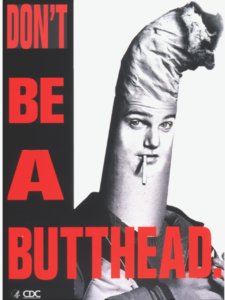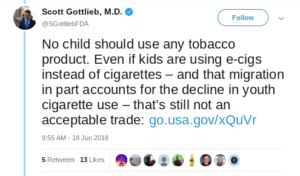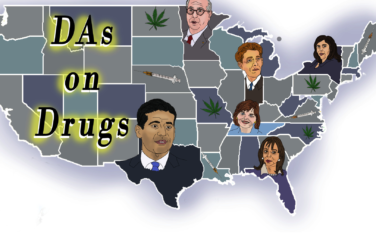There’s a war on nicotine. And just like the War on Drugs in general, it cannot be won. We will never live in a world where nicotine isn’t used by millions.
A nicotine-free world is as unobtainable as one without caffeine or heroin. Why? Because people have always needed and loved drugs–for recreational, spiritual and medicinal purposes. And in the 21st century, drugs are never more than a couple of clicks away, through legal prescriptions or illicit markets.
The use of nicotine is no threat, because nicotine is not the problem. Combusted tobacco is. But so-called public health organizations’ deliberate blurring of this distinction–right now, week by week as we will see–will cost millions of lives.
The Backstory
The invention of the cigarette-rolling machine in 1880 exponentially increased global combusted tobacco use. In the late 1950s, the truth came out: Smoking was responsible for a multitude of life-threatening diseases and a staggering amount of premature death. Tobacco companies got rich off of killing one in two of their customers.
Battle duly commenced between “Big Tobacco” and medical and public health establishments. For decades, US tobacco companies–armed with vast profits, ingenious lawyers, Madison Avenue spin-doctors and political ties–were able to deny the harms of smoking and delay regulations. But they wound up settling a landmark class action lawsuit in 1998. They agreed to pay $206 billion to 46 states, five US territories and the District of Columbia, and made concessions in areas such as advertising and youth targeting.
Public health agencies like the Centers for Disease Control (CDC) and anti-tobacco organizations like the Campaign for Tobacco-Free Kids and the Truth Initiative fought Big Tobacco by running multimedia campaigns to encourage people to quit smoking. Millions did. Today, the major defining characteristic of smoking prevalence in the U.S. is low socioeconomic status–with much higher-than-average rates of smoking among people who are poor and less educated, homeless and drug-using populations, indigenous groups, and people with psychiatric diagnoses.
Public health institutions, hardened by decades of fighting for abstinence from tobacco, adopted an entrenched anti-nicotine stance.
While the central message that smoking is dangerous was true, these campaigns also overreached–by scaring, shaming and stigmatizing people who smoke. Videos profiled dying and remorseful ex-smokers tethered to oxygen tanks, or lacking teeth, hair and voice boxes. Health care providers lectured smokers to “quit or die,” using images to imply that smoking was a sign of unfathomable stupidity.

These campaigns demonized nicotine, the drug derived from tobacco plants, and warned that nicotine could be as addictive as heroin or cocaine. In fact, nicotine in isolation is not particularly harmful, with mild stimulant effects similar to caffeine. Modern criteria diagnose substance use disorders, or addiction, by whether use causes “significant impairment” in health, work or home life–which nicotine use does not. Nicotine also has many potential health benefits. Researchers are studying its abilities treat depression, schizophrenia, mild cognitive impairment and pain.
But public health institutions including the World Health Organization (WHO), hardened by decades of fighting for abstinence from tobacco, adopted an entrenched anti-nicotine stance. The world health establishment has opposed promoting safer methods of consuming nicotine to the world’s smokers–among whom there are now 7 million deaths per year.
In 2003, WHO adopted the Framework Convention on Tobacco Control (FCTC). In the introduction, article 1, the FCTC states, “Tobacco control means a range of supply, demand and harm reduction strategies that aim to improve the health of a population by eliminating or reducing their consumption of tobacco products and exposure to tobacco smoke.”
In practice, tobacco harm reduction strategies were dismissed at every step. Low-dose nicotine patches and gums were to be used to taper off nicotine within three to five months or less–not tolerated as a maintenance medication, or to provide any pleasure.
One early victim of this stance was snus–a moist smokeless tobacco product that comes in a pouch, popular in Sweden. It was dismissed as being as dangerous as cigarettes. (It’s not.) Quitting tobacco was the only acceptable goal.
The problem was, millions of smokers wanted to quit but couldn’t “Just Say No” to nicotine.
A Technological Revolution
Then, from the early 2000s, came the development and rapid improvement of electronic cigarettes and heat-not burn products, and the popular and cultural rise of vaping. These 21st-century nicotine delivery devices are game-changers for tobacco harm reductionists.
E-cigarettes and heat-not-burn devices are the only nicotine replacement products ever developed with the potential to actually eliminate smoking. Their wide-scale adoption has profoundly disrupted the future business plans and stock prices of tobacco companies. It has also sent shock-waves through the tobacco control community.
A world where burning tobacco is as outdated as an eight-track cartridge or a rotary-dial phone? Hell, yes! That world is attainable now. And we cannot allow tobacco control organizations to block this historic leap forward by using the tobacco industry’s past to control the vaping industry’s future.
Because that’s exactly what they have been doing. E-cigarettes and heat-not-burn products make nicotine consumption much safer. In that, they are similar to patches or gums. The crucial difference is they look and feel like cigarettes, replicating the rituals and the enjoyment of smoking for people who switch from combustible tobacco–and therefore reducing the risk of relapse.
But there’s the rub: the mode of delivery. The tobacco control community can’t accept that nicotine is now inhaled in a safer form that so closely simulates smoking. They believe that it “renormalizes” smoking. But how?

[A member of a tobacco harm reduction support group in New York. Credit: Helen Redmond]
“Vaper Madness”
These tobacco harm reduction haters want to enforce abstinence on the world’s billion smokers–in the full knowledge that hundreds of millions cannot abstain. Instead of embracing vaping technologies as the latest and probably greatest iteration of nicotine replacement products, governments and tobacco control institutions all over the globe have unleashed a war on vaping. Even the WHO is opposed to the use of e-cigarettes, believing wrongly that they don’t help people stop smoking.
This nicotine war carries eerie echoes from the ruinous war on illegal drugs. Taking several pages out of the “Reefer Madness” playbook, the tobacco control establishment’s “Vaper Madness” deploys tactics including: specious protect-the-children arguments, “gateway” claims, unfounded exaggerations of risks, and junk science.
The discovery that Juul is popular among some teenagers set off “Juulmageddon,” a massive drug panic, earlier this year. It was only a matter of time until a major e-cigarette company–Juul has 72 percent US market share–was attacked by tobacco control.
Fueled by sensational media stories using loaded words like “hooked”–including a New Yorker piece that quoted pediatrician Jonathan Winickoff describing e-cigarettes as “bioterrorism”–the Food and Drug Administration (FDA) announced a crack-down on Juul, ostensibly aimed at preventing youth use. The FDA’s own grotesque warnings about teens getting “hacked” by vaping are as stigmatizing as it gets.
Scott Gottlieb, the Commissioner of the FDA, recently tweeted:

Adolescent drug use has often been a pretext to limit the choices of adults. We can’t legalize marijuana because more kids will smoke it and get addicted. That turned out to be a lie. Applied to vaping, it amounts to a rejection of harm reduction for adolescents who smoke.
As Gottlieb well knows, teen vaping is stable at 11.7 percent, down from a high of 16 percent, and youth smoking rates are now the lowest on record.
Calling e-cigarettes a “tobacco product” is a deliberate attempt to mislead: They contain no tobacco. Adolescent experimentation with vaping products is normal. And it is an acceptable trade. What parent wouldn’t prefer that their teen picked up a pack of Juul pods instead of a pack of Marlboros?
Just in the past two weeks, Gottlieb announced, without sharing any data, that teen use of e-cigarettes has reached an “epidemic proportion of growth.” In a classic tough-on-drugs statement he warned: “The disturbing and accelerating trajectory of use we’re seeing in youth, and the resulting path to addiction, must end. It’s simply not tolerable. I’ll be clear. The FDA won’t tolerate a whole generation of young people becoming addicted to nicotine as a tradeoff for enabling adults to have unfettered access to these same products.“
Just as an experiment, try substituting the word “marijuana” for nicotine in his statement.
The FDA Commissioner vowed a second crackdown on Juul, and the FDA launched a campaign to warn “kids” about the dangers of e-cigarettes with the ominous tagline, “Know the Real Cost of Vaping.
Gottlieb knows that numerous studies show that vaping is safer than smoking by orders of magnitude. His FDA requested that the National Academies of Sciences, Engineering and Medicine review the evidence. Their report found:
“There is substantial evidence that completely switching from regular use of conventional cigarettes to e-cigarettes results in reduced short-term adverse health outcomes in several organ systems.”
E- cigarette safety reviews from Public Health England and the House of Commons Science and Technology Committee have gone much further—arriving at a 95 percent estimate of reduction in total harms.
Old Drug-War Tropes, New Target
No one loathes the conclusions of these reports more than a group of tobacco harm reduction haters at the University of California, San Francisco, led by troglodyte Professor Stanton Glantz of UCSF’s Center for Tobacco Control Research and Education. Here’s just one of Glantz’s bombastic, quit-or-die recommendations to the FDA:
“Smoking reduction should not be the goal or an acceptable outcome of any NRT [nicotine replacement therapy] treatment regimen. Rather, complete cigarette cessation and complete abstinence from any alternative tobacco products should continue to be the desired endpoint.”
Drug warriors claimed for decades that teen marijuana use was a “gateway” to “harder” drugs like cocaine and heroin. That claim was debunked. But it’s not surprising that governments with the aim of a “drug-free world” would fund researchers to find supposed gateway effects. Similarly, anti-vaping advocates with the target of a “tobacco-free world” contend that e-cigarettes are a gateway to smoking tobacco.
Seriously? Young people are choosing to use e-cigarettes precisely because they are not tobacco products. Teen smokers are both smart and tech-savvy. They got the message that smoking stinks, and they started vaping.
The first casualty of war is truth, and the sheer volume of junk science published about e-cigarettes is astounding. A stream of shock stories have declared that e-cigarettes increase the risk of cancer, double the risk of heart attack, and cause “popcorn lung” and “wet lung.” The not-so-subtle message: Vaping is as damaging to health as smoking.
Tobacco harm reduction-based public health researchers have to spend an inordinate amount of time debunking or replicating such studies. Yet every scaremongering, anti-vaping recommendation by researchers ought really to end with the phrase, “…and that’s why continuing to smoke cigarettes is a better choice.”
There are small causes for optimism in the U.S. The American Cancer Society, previously an opponent of e-cigarettes, released a position statement this year endorsing their use. The American Heart Association reluctantly recommends the use of e-cigarettes…while still reinforcing myths about nicotine. They quote Dr. Aruni Bhatnagar:
“Nicotine is not innocuous—it’s known to be harmful and have cardiovascular effects…We consider exposure to nicotine as part of smoking. We don’t want separate definitions for combustible and e-cigarettes.”
With such mixed messaging, it’s no wonder public perceptions about vaping and health are wildly inaccurate. A recent Rasmussen survey found that only 20 percent of American adults think e-cigarettes are safer than combustible cigarettes. Thirteen percent think e-cigarettes are less safe than traditional ones, while 50 percent think the health risk is about the same from both.
The misinformation is Orwellian. And considering how such misperceptions will affect health outcomes for smokers, this is a tragedy.

[A member of a tobacco harm reduction support group in New York. Credit: Helen Redmond]
Our Duty to Spread Success Stories
What’s so frustrating for American tobacco harm reductionists is knowing how rates of smoking have been dramatically driven down in a range of other countries.
In Japan, cigarette sales have fallen by an incredible 25 percent over the past two years. A drop of this magnitude has never been seen before. And the reason? The availability of reduced-risk devices. In 2014, three heat-not-burn products were introduced. Millions of Japanese smokers have now switched.
Interestingly, the transition to heated tobacco is mostly market-driven. “I am aware of no official government or health body that is telling smokers about relative risks or encouraging switching,” David Sweanor, chair of the advisory board of the Centre for Health Law, Policy and Ethics at the University of Ottawa and an expert on THR in Japan, told me. “Consumers are doing so on their own. Much the way drug users learn ways to reduce risks despite, rather than because, of government efforts.” This is a huge win for public health in a country with one of the world’s highest smoking rates.
Why don’t more people know that vaping and snus are safer, that huge numbers of smokers are switching, and that their health is improving?
In Britain, according to a new survey by the anti-smoking organization Action on Smoking and Health (ASH), the number of former smokers who’ve started to vape is now over three million.
Deborah Arnott, chief executive of ASH, stated: “UK policy is on the right track, with thousands of smokers making the switch to vaping and improving their health and little sign of non-smokers taking up vaping. But even more smokers could benefit if e-cigarettes were licensed as medicines and available on prescription.”
Sweden now has the lowest smoking prevalence rate in the developed world. It stands at just 5 percent, as a result of millions switching to snus. Unfortunately, snus has been banned in the European Union since 1993. Swedish Match, the makers of snus, has tried unsuccessfully to get the ban lifted.
Why don’t more people know that vaping and snus are safer, that huge numbers of smokers are switching, and that their health is improving?
The media bears heavy responsibility—both for ignoring such outstanding examples of public health policy, and for instead using scare stories to generate clicks and yet more drug hysteria.
Have US media outlets learned nothing from the panic they whipped up around crack cocaine in the 1980s and ‘90s—fueling racially biased mass incarceration—and more recently around opioids?
Journalism has an ethical obligation to reject the current anti-vaping frenzy. Journalists have a responsibility to report the truth about e-cigarettes and heat-not-burn products, refrain from republishing anti-vaping propaganda from FDA press releases, and call out junk science, stigma and dogma. This consciousness heavily informs our mission at Filter.
The demonization of nicotine must end. A war on nicotine is a war on the people who use it—and particularly on some of the most vulnerable and stigmatized people in the US and across the world.
The stakes could not be higher. One billion lives are in the balance.





Show Comments